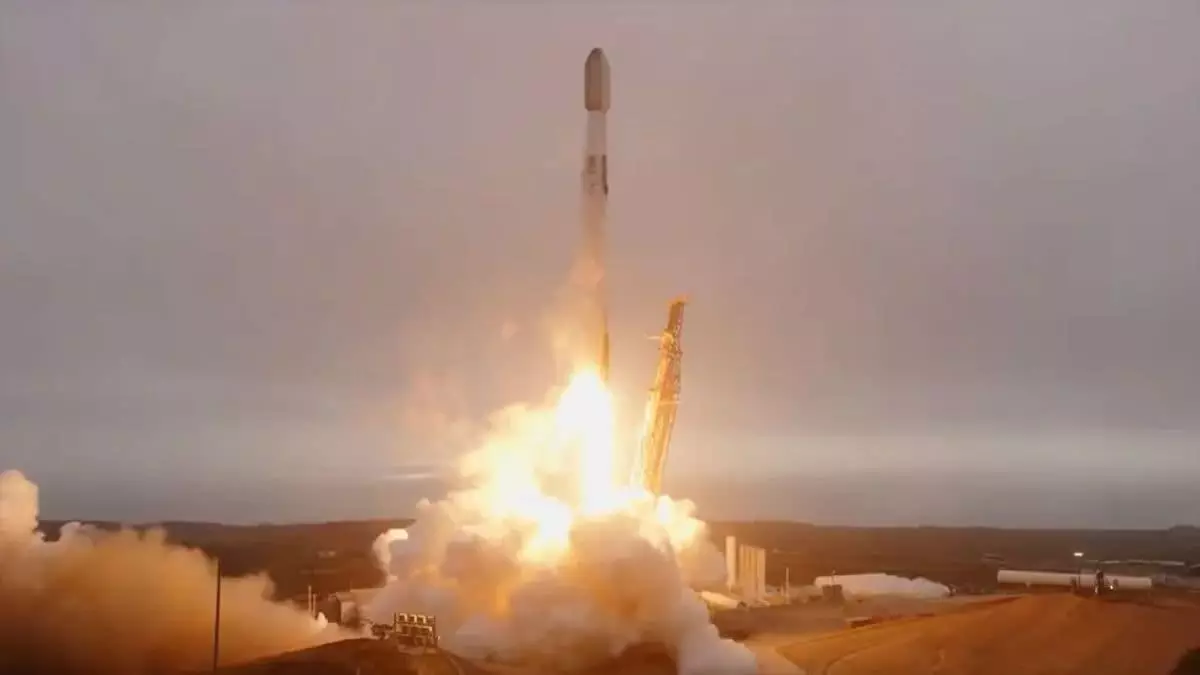In an impressive feat of engineering and ambition, SpaceX has solidified its position as a leader in the race for global internet accessibility with its latest launch of 26 Starlink satellites. This venture, executed flawlessly from Vandenberg Space Force Base, represents not merely another launch in a series, but a pivotal advancement towards bridging the connectivity gap that plagues many remote and underserved regions across the globe. At a time when the digital divide remains a pressing issue, SpaceX’s relentless dedication to expanding its satellite constellation serves as a beacon of hope for those still waiting for reliable internet service.
Consistency and Innovation: A Winning Combination
SpaceX’s achievement isn’t just about the number of satellites in orbit, but also the technological mastery that facilitates their launches. The Falcon 9, renowned for its reusability, performed flawlessly once again with its 15th flight of the booster designated B1081. This dedication to efficiency reshapes our understanding of space launch logistics. By emphasizing sustainable practices—reusing rockets rather than building new ones for every mission—SpaceX is not only setting an industry standard but is also inciting a necessary conversation about the environmental and economic efficiencies of space endeavors. Still, one cannot overlook the potential implications of launching thousands of satellites that may contribute to space debris.
The Sky’s the Limit for Global Connectivity
With now over 7,600 active satellites circling Earth, SpaceX is doing more than just flying machinery into orbit; it’s crafting a digital lifeline for millions. The promise of high-speed internet reaching the most isolated corners of the planet is not merely a technological triumph but a humanitarian initiative poised to empower those who have long been disconnected. As the Starlink network provides direct-to-cell services, it opens previously unimaginable avenues for communication, education, and economic development—transforming lives in the process.
However, while the notion that anyone can access internet service via a simple satellite connection sounds remarkable, we must remain cautious of the monopolistic tendencies that may arise. As SpaceX expands its influence in the internet service arena, it raises questions about competition and accessibility. The reality of relying heavily on a single entity for global connectivity could lead to challenges that include price hikes and uneven service availability.
Looking Ahead: The Path to Comprehensive Coverage
As SpaceX’s Starlink strives to fulfill its ambitious mission, it steps into uncharted territory where technology meets ethical considerations. We must laud the boldness of Elon Musk and his company’s vision while maintaining a critical eye on the potential socioeconomic consequences. The advancing network not only promises to enhance communication; it also poses questions about the digital divide evolving alongside it. The development of applications like in-flight connectivity and emergency response communications could revolutionize various industries, but at what cost?
The unfolding narrative of SpaceX’s Starlink is an illustration of both progress and peril—a testament to our age’s promise and the growing responsibility that comes with it. While celebrating these advancements, we must demand accountability and humility from those who now hold the reins of global connectivity. We stand at the precipice of a new digital frontier; it is vital we navigate it wisely and equitably.

